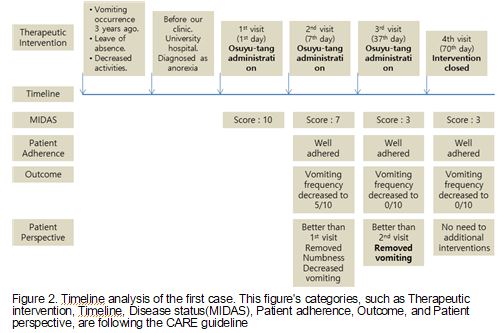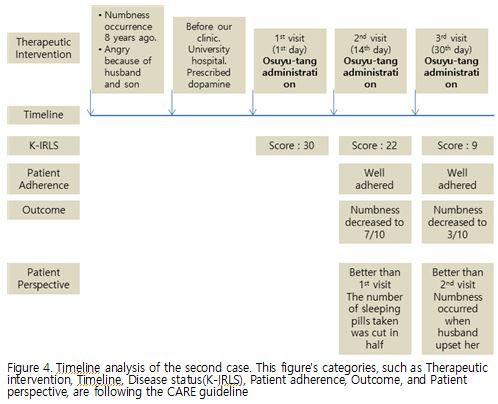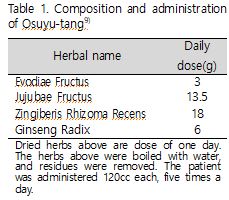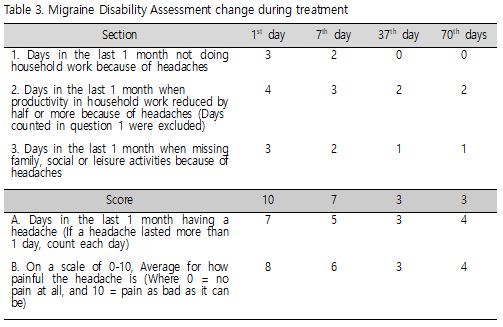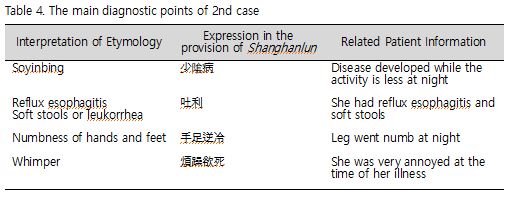Objective : This study was intended to evaluate if treatment with Osuyu-Tang following the disease pattern identification diagnostic system based on Shanghanlun provisions (DPIDS)
worked analyzing the progress of patients with migraine and restless legs syndrome and to reinterpret the provision of 309 Soyinbing Osuyu-Tang based on the analysis of whether it worked.
Methods : Two cases treated with Soyinbing Osuyu-Tang were analyzed using DPIDS. The
migraine and restless legs syndrome in both cases were evaluated using the migraine disability assessment (MIDAS) and the Korean versions of the international restless legs scale (K-IRLS), respectively.
Results : In the first case, during 45 days of treatment, the MIDAS decreased from 10 days to 3 days. In the second case, during 30 days of treatment, the K-IRLS decreased from 30 to 9. In both cases, Soyinbing was associated with the disease, although the activity was less; and Leng (冷) was associated with numbness in the kneeling position.
Conclusions : It was confirmed that treatment with Osuyu-Tang was effective against migraine and restless legs syndrome and that Leng could be associated with numbness in the kneeling position. The etymological analysis of the Shanghanlun characters suggested the possibility of further clarifying the clinical significance and interpretation of Shanghanlun.
KeyWords : Soyinbing, Osuyu-Tang, Leng (冷), Shanghanlun, disease pattern identification diagnostic system based on Shanghanlun provisions (DPIDS), Herbal medicine
